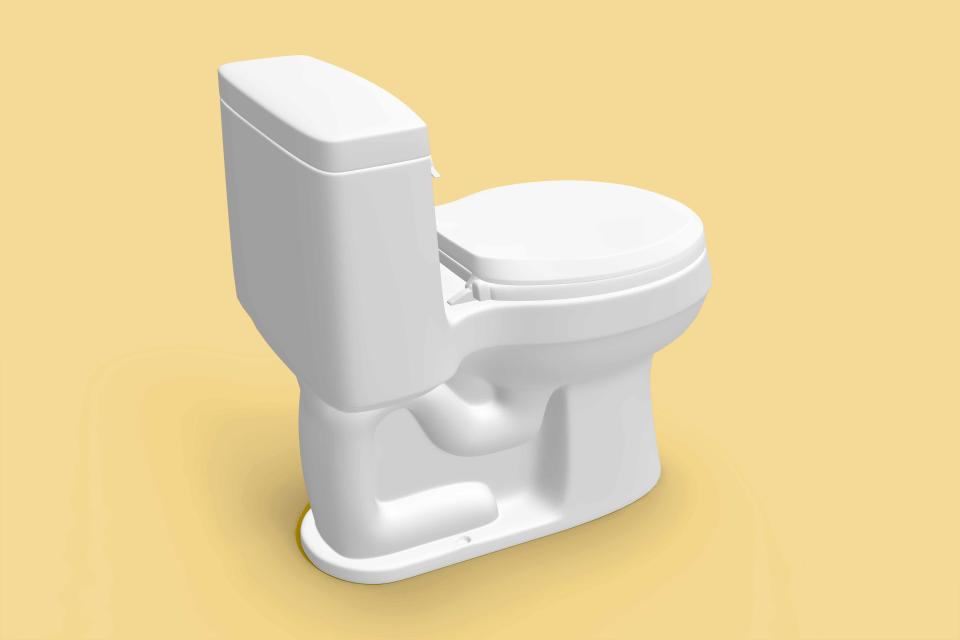What Exactly Is a Bidet Toilet?
It may be time to upgrade your bathroom routine.

Lasha Kilasonia/Getty Images
Ah, bidets. If you've ever traveled internationally—especially in Europe and Japan—you've probably encountered bidet toilets, which offer a few extra features you don't typically find here in the U.S. to help you stay cleaner.
Here's what you need to know about bidet toilets and their benefits before you make the call: to bidet or not to bidet?
What Bidet Toilets Do
Bidet toilets are not a modern invention—they date back to 17th century Europe. Bidets spray water to help you clean up after you've done your business. Think quick-and-easy shower for your undercarriage.
Depending on how fancy you want to get, you can install ones that use warm water and offer extra features like a heated air dry, or opt for a more basic version that washes away waste using clean room temperature water.
Bidets are set up to use water from the water supply line—so you don't have to worry that you'll be using water from the tank or the bowl to clean yourself.
Here's somewhere where the U.S. is behind the rest of the world. Europe and Asia are fully on board with bidets.
Benefits of Bidet Toilets
Bidets offer a slew of benefits—both for you and your health, the environment, and even your plumbing.
Related: Is It Finally Time to Get a Bidet?
Better hygiene
Cleaning up with water will get you cleaner than just wiping and swiping. It can also be gentler than wiping, reducing the risk of irritation and tears. For people with mobility issues, it can help make it easier to stay clean when they use the bathroom.
And of course, using a bidet in lieu of toilet paper helps reduce the risk that bacteria from fecal matter gets spread into the rest of the area down there or even onto your hands. And that can help reduce the risk of contamination and infection.
Reduced toilet paper use
If you use a bidet, you may just need a tiny amount of toilet paper to blot dry. Or if you have a bidet dryer, are willing to drip dry, or want to use a small towel, you won't have to use any toilet paper at all. Bidet use can cut your use of toilet paper by at least 75 percent, according to experts, helping you save money—and save the trees, too.
Reduced risk of plumbing issues
Toilet paper is the culprit for many bathroom backups, and using a bidet can help make those a lot less common. So you may not need to keep the plunger on hand and the plumber on speed dial—unless, of course, you have kids that put other things in the toilet.
Better for the environment
Obviously, less TP use means fewer trees converted into toilet paper. Currently, nearly two million trees per day are turned into toilet paper.
Using a bidet in lieu of toilet paper can also save a ton of water. It takes about a pint of water to run a bidet, while converting trees to toilet paper uses 37 gallons of water.
Installing a Bidet
There are a few different ways to bring a bidet into your life. Traditionally, a bidet was completely separate from your actual toilet. That may be great if you're planning a bathroom renovation, but it's probably not as feasible if you have a small bathroom or want to get in on bidet benefits without creating room in your bathroom for another toilet-sized fixture.
Related: The 9 Best Bidets of 2024, Tested and Reviewed
That brings us to the bidet seat, which has become the most popular way to add a bidet. The simplest versions, which use the water supply line, can often be installed in less than a half hour. Upgraded versions with heated water and heated dryers may require a bit more skill—and a good bathroom configuration. You'll need to have a hot water line from the sink and an electrical outlet handy for easiest installation of a bidet.
You can also buy a simple bidet hose attachment, which releases a spray when you turn it on.
How to Clean a Bidet
Bidets need to be kept clean to reduce the risk of contamination that could cause an infection.
Many bidets have a "nozzle clean" function to run water through the system to clean it.
You'll want to avoid the use of harsh chemicals like bleach, and opt for mild cleansers like Simple Green, vinegar, or a solution of dish detergent and water.
Follow the manufacturer's instructions regarding cleaning schedule and techniques, as many bidets have their own recommendations regarding how often and how to clean them.
For more Real Simple news, make sure to sign up for our newsletter!
Read the original article on Real Simple.

